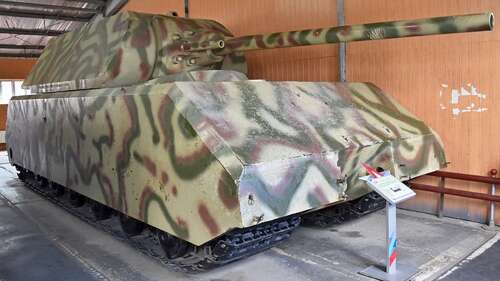
The Maus went through several iterations and was subjected to constant design changes during its development, the details of which would bore all but the most stalwart of World War II historians. The bottom line was that development was a tug of war between Hitler’s desire for it to be bigger and more powerful than any other tank on the planet and the practical concerns of it actually being functional.
By all accounts, when Hitler ordered the creation of the Maus, Germany was in dire straights. His field marshal, Erwin Rommel — also known as the Desert Fox – was waging battle in North Africa, where strategic oil fields were located. The German army faced a limited fuel supply, was short on raw materials, and lacked the capacity and workforce to build the Maus.
The initial plan for the heavy tank required a lot of armor, a significant main canon, and at least one machine gun for close-quarter defense. Both Krupp and Porsche submitted designs, with Hitler picking Porsche’s. Some historians think this was Hitler’s way of offsetting some of Porsche’s past design failures. In contrast, others believe Hitler put him in yet another position to fail by including the word “indestructible” in the actual tank requirements.
Whatever the case, Porsche was slated to develop the chassis and oversee the project, Krupp was tasked with producing the hull, turret, and guns. Meanwhile, Alkett, a manufacturer of armored fighting vehicles for the Wehrmacht, would put it all together.

